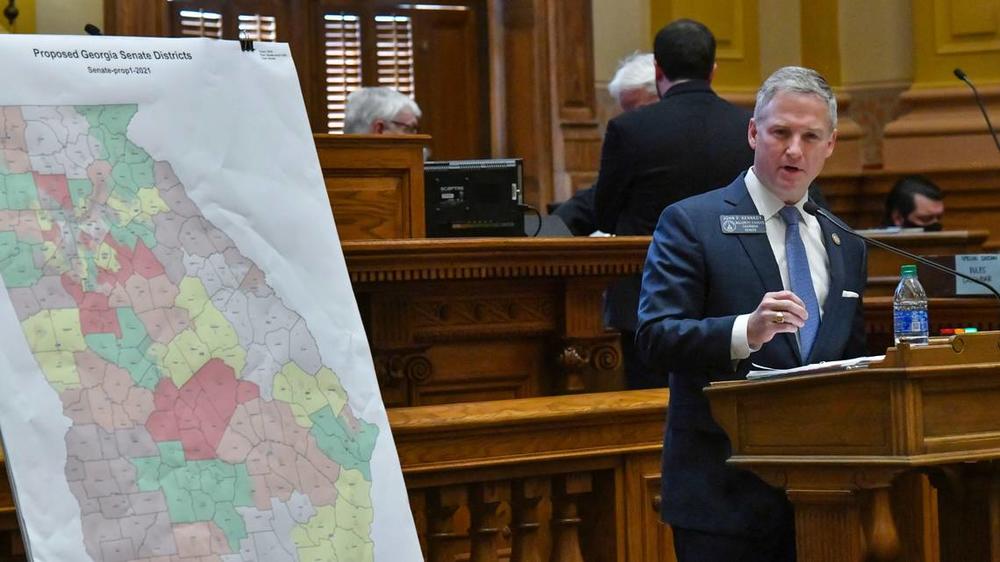
Caption
Georgia state Sen. John Kennedy, R-Macon, introduces a map of state Senate districts in this 2021 file photo. A federal judge ruled in October that some of Georgia’s congressional, state Senate and state House districts were drawn in a racially discriminatory manner.
Credit: Hyosub Shin/AP

